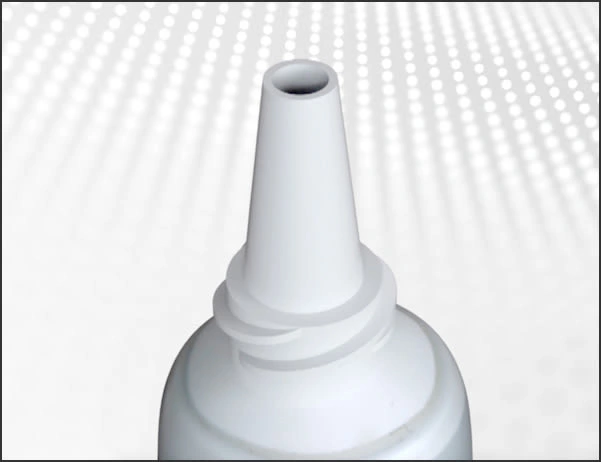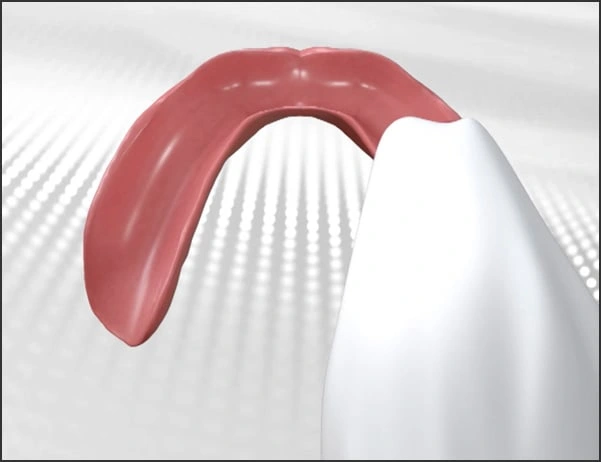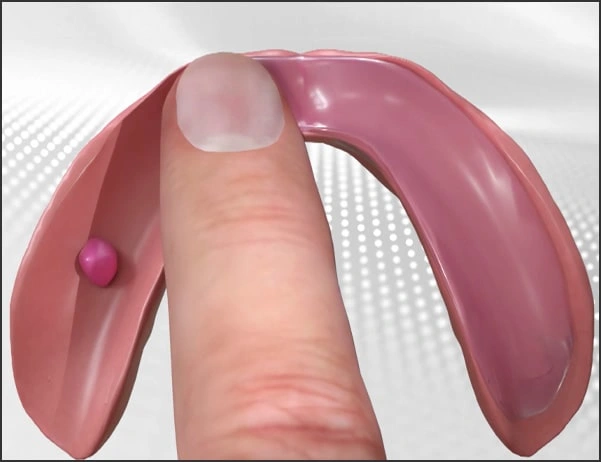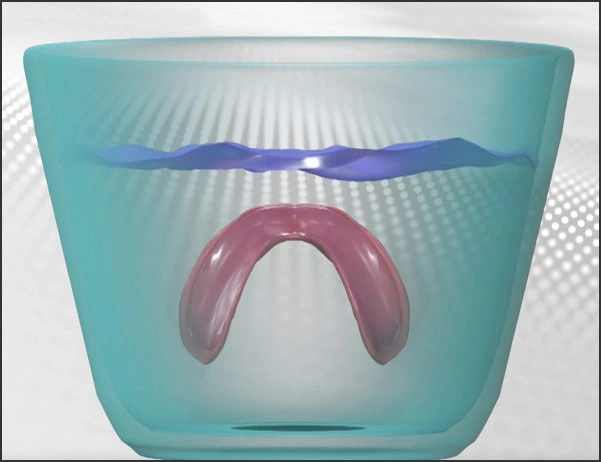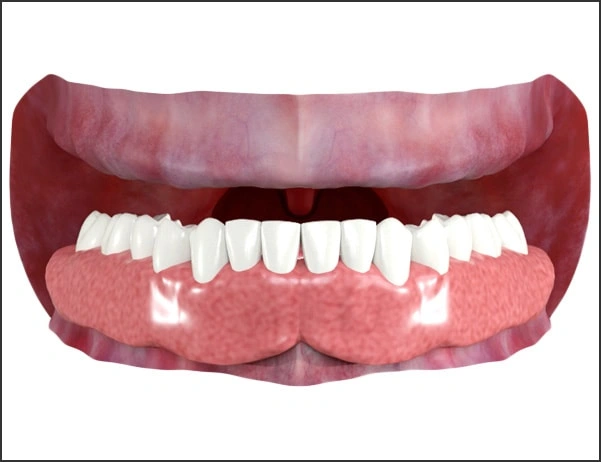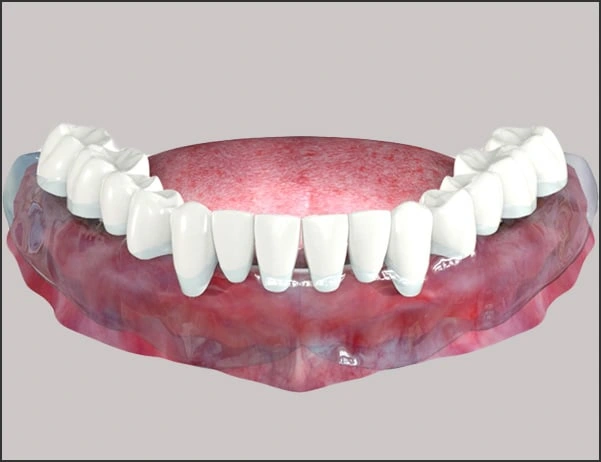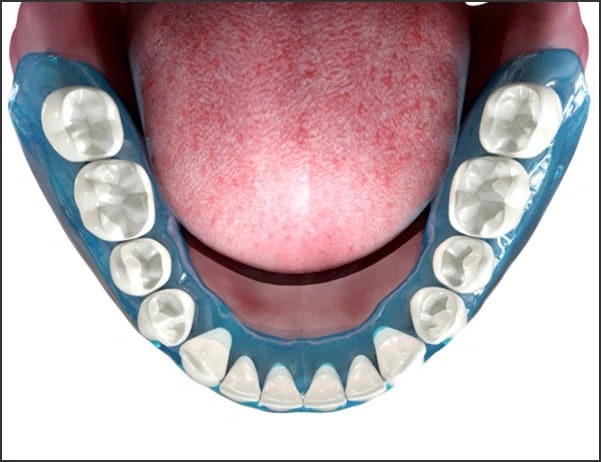Prosthesis Retention and Effective Use of Denture Adhesive in Complete Denture Therapy
Course Number: 360
Appropriate Application of Denture Adhesive
Table 1. Appropriate Application of Denture Adhesive.
Inform the patient that, due to existing conditions, achieving optimal complete denture retention and stability may not be possible. Also suggest the proper use of denture adhesive is an acceptable means of augmenting the stability and retention of a new prosthesis. Honest and realistic communication of the anticipated results of therapy may ease future patient management problems.
The use of small amounts of hydrated paste adhesives works well due to favorable adhesive, cohesive, and viscosity characteristics (Figure 1).
Figure 1. Small dispensing nozzle tube supports use of minimal adhesive.
Figure 1. Small dispensing nozzle tube supports use of minimal adhesive.
3. A small amount of the paste should be dispensed onto the clean and dry (Figure 2) intaglio surface of the denture. The use of excessive adhesive will likely interfere with proper placement of the denture on the bearing tissues. For the maxillary denture, adhesive should be dispensed in the midpalatal region, while for the mandibular denture very small amounts can be placed in two or three locations along the ridge crest (Figure 3).
Figure 2. Thoroughly dry denture.
Figure 3. Adhesive application to mandibular denture.
4. Once dispensed onto the dentures, the patient should evenly disperse the paste over the entire intaglio surface of the prosthesis with a clean, dry finger (Figure 4). This will result in a thin, even layer of adhesive.
Figure 4. Adhesive dispersed over intaglio surface making a thin layer.
5. The denture is submersed in a container of cool water for only a few seconds to maximally hydrate the adhesive (Figure 5). The denture should remain submersed in water for approximately 2 to 3 seconds.
Figure 5. Denture submersed in cool water to hydrate adhesive.
6. The denture is then placed in the mouth and firmly seated with finger pressure for approximately 10 seconds (Figure 6). Maintenance of seating pressure will cause the adhesive to flow throughout the interfacial space between the denture base and the denture bearing soft tissues.
Figure 6A. Denture placed and firmly seated.
Figure 6B. Seat with figure pressure.
Figure 6C. Adhesive spreads evenly.
7. The patient may be provided with the sample container of adhesive used during the demonstration. Suggesting local stores that carry this product will emphasize that adhesive use is a component of regular denture use. The patient should be told that the use of excessive adhesive may indicate an inadequate fit, necessitating denture reline or remake procedures.



